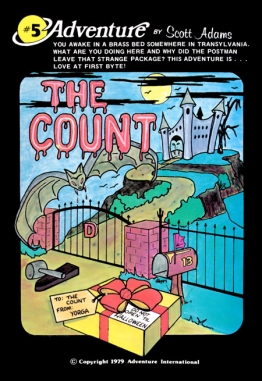Basic English is a controlled language based on standard English, but with a greatly simplified vocabulary and grammar. It was created by the linguist and philosopher Charles Kay Ogden as an international auxiliary language, and as an aid for teaching English as a second language. It was presented in Ogden's 1930 book Basic English: A General Introduction with Rules and Grammar.

Novial is a constructed international auxiliary language (IAL) for universal human communication between speakers of different native languages. It was devised by Otto Jespersen, a Danish linguist who had been involved in the Ido movement that evolved from Esperanto at the beginning of the 20th century, and participated later in the development of Interlingua. The name means 'new' + 'international auxiliary language'.
In linguistic typology, subject–verb–object (SVO) is a sentence structure where the subject comes first, the verb second, and the object third. Languages may be classified according to the dominant sequence of these elements in unmarked sentences. English is included in this group. An example is "Sam ate oranges."
English grammar is the set of structural rules of the English language. This includes the structure of words, phrases, clauses, sentences, and whole texts.

The J programming language, developed in the early 1990s by Kenneth E. Iverson and Roger Hui, is an array programming language based primarily on APL.
A puzzle is a game, problem, or toy that tests a person's ingenuity or knowledge. In a puzzle, the solver is expected to put pieces together in a logical way, in order to achieve the correct solution of the puzzle. There are different genres of puzzles, such as crossword puzzles, word-search puzzles, number puzzles, relational puzzles, and logic puzzles. The academic study of puzzles is called enigmatology.
Sango is the primary language spoken in the Central African Republic and also the co-official language of the country. It is used as a lingua franca across the country and had 450,000 native speakers in 1988. It also has 1.6 million second language speakers.
This article is an informal outline of the grammar of Interlingua, an international auxiliary language first publicized by IALA. It follows the usage of the original grammar text, which is accepted today but regarded as conservative.
The grammar of Classical Nahuatl is agglutinative, head-marking, and makes extensive use of compounding, noun incorporation and derivation. That is, it can add many different prefixes and suffixes to a root until very long words are formed. Very long verbal forms or nouns created by incorporation, and accumulation of prefixes are common in literary works. New words can thus be easily created.
In linguistic typology, a verb–subject–object (VSO) language has its most typical sentences arrange their elements in that order, as in Ate Sam oranges. VSO is the third-most common word order among the world's languages, after SOV and SVO.
In linguistic typology, a subject–object–verb (SOV) language is one in which the subject, object, and verb of a sentence always or usually appear in that order. If English were SOV, "Sam oranges ate" would be an ordinary sentence, as opposed to the actual Standard English "Sam ate oranges" which is subject–verb–object (SVO).

The Count is a text adventure written by Scott Adams and published by Adventure International in 1979. The player character has been sent to defeat the vampire Count Dracula by the local Transylvanian villagers, and must obtain and use items from around the vampire's castle in order to defeat him.
Araki is a nearly extinct language spoken in the small island of Araki, south of Espiritu Santo Island in Vanuatu. Araki is gradually being replaced by Tangoa, a language from a neighbouring island.

Glosa is a constructed international auxiliary language based on Interglossa. The first Glosa dictionary was published 1978. The name of the language comes from the Greek root glossa meaning tongue or language.
The grammar of Modern Hebrew shares similarities with that of its Biblical Hebrew counterpart, but it has evolved significantly over time. Modern Hebrew grammar incorporates analytic, expressing such forms as dative, ablative, and accusative using prepositional particles rather than morphological cases.
Paresi is an Arawakan language spoken in Brazil. There are approximately 2000 Paresi people, and around 1800 speak the language. The Paresi live in the state of Mato Grosso, more specifically in nine indigenous territories: Rio Formoso, Utiariti, Estação Parecis, Estivadinho, Pareci, Juininha, Figueira, Ponte de Pedra, and Uirapuru. In terms of endangerment, it is not in immediate danger. It is used in many everyday domains, but there is a lack of transmission to younger generations, as well as an evident language shift to Portuguese. This is a result of Portuguese being used in education and healthcare, as well as the integration of Brazilian culture among the Paresi people, creating changes in their language and cultural practices.
Unish is a constructed language developed by a research team at Sejong University, South Korea. The term “Unish” is used in reference to it being cast as a universal language in the globalized era.
Tamashek or Tamasheq is a variety of Tuareg, a Berber macro-language widely spoken by nomadic tribes across North Africa in Algeria, Mali, Niger, and Burkina Faso. Tamasheq is one of the three main varieties of Tuareg, the others being Tamajaq and Tamahaq.
LFN has an analytic grammar and resembles the grammars of languages such as the Haitian Creole, Papiamento, and Afrikaans. On the other hand, it uses a vocabulary drawn from several modern romance languages – Portuguese, Spanish, Catalan, French, and Italian.

Dog Star Adventure is a text adventure game written by Lance Micklus in TRS-80 BASIC and published as the cover article in the May 1979 issue of SoftSide magazine. It is historically notable as the first example of the source code to a text adventure being published, and as a result, many later text adventures are based on its concepts.


